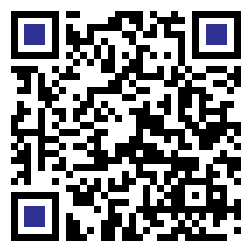Metode Clustering K-Medoids untuk Aplikasi Pembelajaran di Masa Pandemi COVID-19
DOI:
https://doi.org/10.54367/means.v6i1.1255Keywords:
Data Mining, Algoritma K-Medoid, Clustering, Pembelajaran, Covid 19Abstract
The central government took a policy to carry out social distancing with this social distancing having an impact on all activities such as having an impact on the learning process that usually takes place in the classroom turning into online learning using several supporting applications in the learning process during the Covid 19 pandemic. Such as using WhatsApp, Moodle , and Zoom for the learning process. Of the three applications commonly used by students and lecturers for the learning process, it can be grouped using the K-Medoids method which will get a cluster of preferred and disliked applications. The researcher took data from a questionnaire made with Google Form which was distributed to 100 students who often did the learning process with the three applications. Can produce a grouping of applications that students like and dislike in the learning process. By looking at the level curve in Figure 7. There are two clusters of red and blue. If the curved line to the right increases, there are many things that are not liked in the application used. Conversely, if the line from the curve to the right decreases, then online applications are less favorable. The results of this study can be seen from the curve picture that learning is most prioritized in the learning process during the Covid 19 pandemic using the Moodle and WhatsApp applications, and the use of zoom is not prioritized in the learning process. if the line from the curve to the right decreases, then online applications are less favored. The results of this study can be seen from the curve image that learning is most prioritized in the learning process during the Covid 19 pandemic using the Moodle and WhatsApp applications, and zooming is not prioritized in the learning process. if the line from the curve to the right decreases, then online applications are less favored. The results of this study can be seen from the curve picture that learning is most prioritized in the learning process during the Covid 19 pandemic using the Moodle and WhatsApp applications, and the use of zoom is not prioritized in the learning process.References
M. N. K. Nababan, “PENERAPAN WEB BASED APPLICATION SISTEM PENILAIAN ( REPORTING ) SISWA,†vol. 3, no. 2, pp. 60–64, 2020.
W. Purba, D. Ujung, T. Wahyuni, L. Sihaloho, and J. Damanik, “PERANCANGAN SISTEM INFORMASI PEMESANAN TIKET ONLINE PADA KMP . IHAN BATAK BERBASIS,†vol. 3, no. 2, pp. 65–75, 2020.
N. P. Sijabat, M. A. Riad, J. S. Muda, and D. B. Sanjaya, “Analisa Efektivitas Algoritma Minimax , Alpha Beta Pruning , dan Negamax dalam Penerapannya pada Permainan Papan ( Board Game ),†vol. 3, no. 2, pp. 49–59, 2020.
M. A. K-means, W. Wahyuni, and H. Fahmi, “Penerapan Data Mining Clustering Pada Siswa-Siswi SMK Swasta Jaya Krama Beringin Dalam Menerima Potongan Biaya Administrasi Sekolah Dengan,†vol. 3, no. 2, pp. 1–7, 2020.
B. Krismoyo and J. R. Sagala, “PENERAPAN METODE WEIGHTED PRODUCT ( WP ) MENENTUKAN SISWA DROP OUT PADA,†vol. 3, no. 2, pp. 8–14, 2020.
M. N. K. Nababan, T. Desyana, S. Rumapea, S. S. Sihotang, and L. M. Gultom, “ANDROID MENGGUNAKAN ALGORITMA AES,†vol. 3, no. 2, pp. 76–80, 2020.
M. A. Iqbal and R. Rosnelly, “Perancangan Aplikasi Media Pembelajaran Pengenalan Lapisan Bumi Menggunakan Augmented Reality Berbasis Android,†J. Mhs. Fak. …, vol. 3, no. 2, pp. 26–33, 2020, [Online]. Available: http://e-journal.potensi-utama.ac.id/ojs/index.php/FTIK/article/view/935.
A. Mikrokontroler, D. Gulo, G. Careful, H. Y. Tumanggor, and F. Azmi, “Rancang Bangun Robot Lengan Untuk Deteksi Warna Berbasis,†vol. 3, no. 2, pp. 91–95, 2020.
D. Sitanggang, S. Simangunsong, R. U. Sipayung, and A. S. Nababan, “Perancangan Aplikasi Penyeleksian Penerimaan Siswa Untuk Mengikuti Oliampiade Sains Berbasis Android,†vol. 3, no. 2, pp. 34–43, 2020.
J. Wijaya, V. Frans, and F. Azmi, “Aplikasi Traveling Salesman Problem Dengan GPS dan Metode Backtracking,†vol. 3, no. 2, pp. 81–90, 2020.
E. Suwandy, H. Bindan, E. Pranoto, and A. Dharma, “Analisa Metode Random Forest Tree dan K-Nearest Neighbor dalam Mendeteksi Kanker Serviks,†vol. 3, no. 2, pp. 97–101, 2020.
M. Jefika, H. Kosasi, G. Prayogi, and A. Dharma, “Prediksi Gelombang Corona Dengan Metode Neural Network,†vol. 3, no. 2, pp. 102–107, 2020.
O. Sihombing, N. S. Nainggolan, B. L. Gaol, and N. Kesuma, “Rancang Bangun Aplikasi Objek Wisata Kabupaten Tapanuli Tengah Berbasis Android,†vol. 2, no. 1, pp. 14–17, 2020.
D. Sitanggang et al., “ANALISIS PERANCANGAN APLIKASI PEMESANAN TIKET KAPAL BERBASIS ANDROID,†vol. 2, no. 1, pp. 34–38, 2020.
D. A. Butar-butar, D. Amalia, K. Mayra, A. Nst, and Y. Naibaho, “Pemanfaatan Teknologi Informasi Dalam Pengambilan Keputusan Penilaian Karyawan Terbaik,†vol. 2, no. 1, pp. 43–46, 2020.
S. P. Tamba, D. R. Hia, D. Prayitna, and A. Tryvaldy, “Pemanfaatan Teknologi Berbasis Mobile Untuk Manajemen Kontrol Nilai Dan Absensi Siswa Pada Mts Al-Ittihadiyah Medan,†vol. 2, no. 1, pp. 18–22, 2020.
J. Sekip, P. Tengah, K. M. Petisah, K. Medan, and S. Utara, “PENERAPAN METODE FULL COSTING DALAM PENENTUAN HARGA POKOK PRODUKSI PADA PT . MEDAN TROPICAL CHANNING & FROZEN INDUSTRIES,†vol. 2, no. 1, pp. 29–33, 2020.
Downloads
Published
How to Cite
Issue
Section
License
Copyright (c) 2021 MEANS (Media Informasi Analisa dan Sistem)

This work is licensed under a Creative Commons Attribution 4.0 International License.














